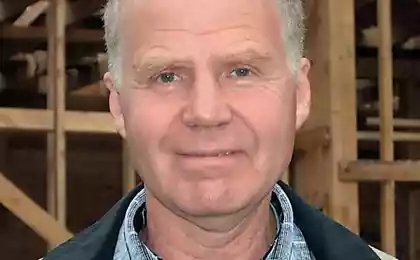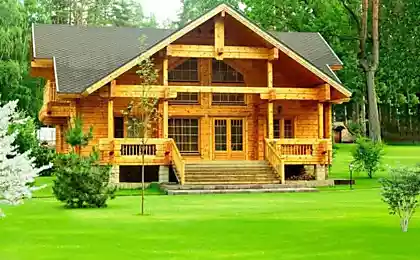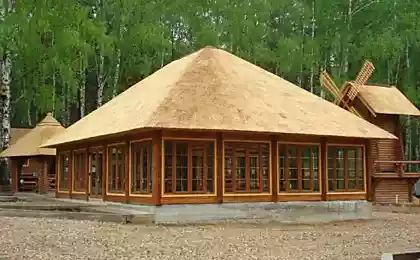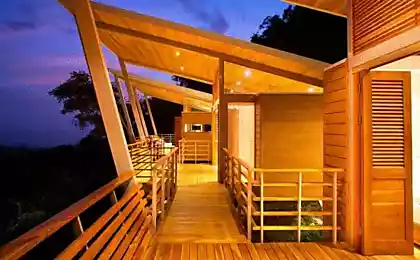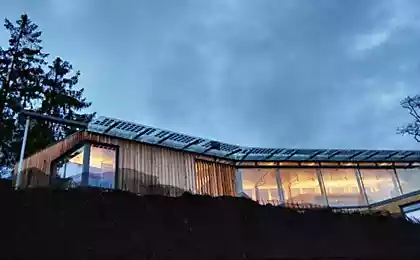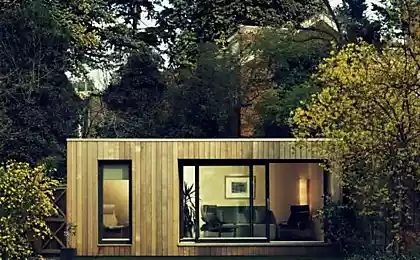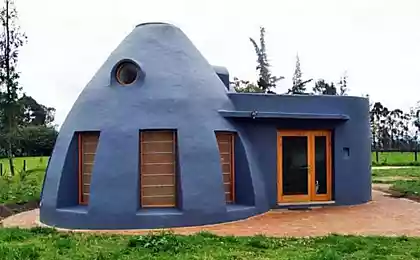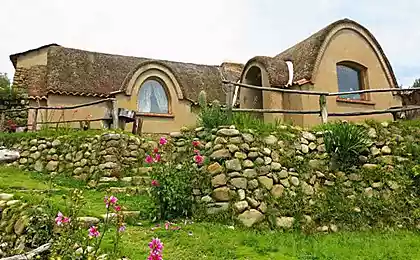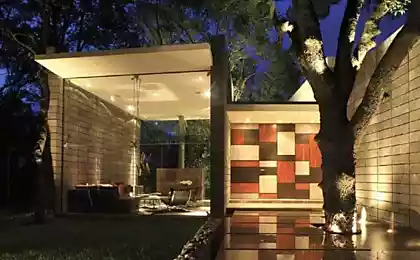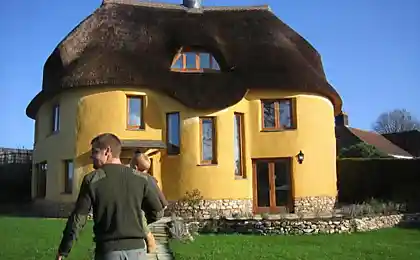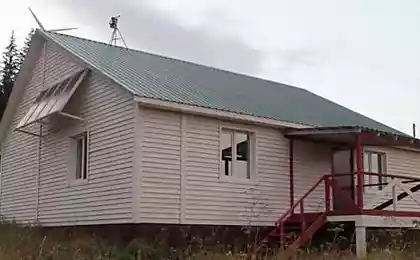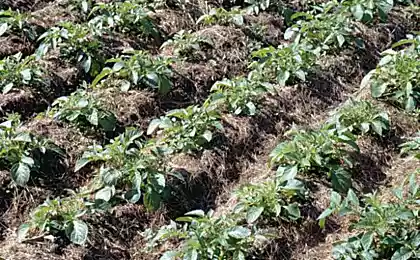542
Eco-house from natural materials
Straw huts, log huts, huts of clay, sand or even horse manure on the technologies of our ancestors — the green building is now in the trend. Thatched house
Voronezh, Russia
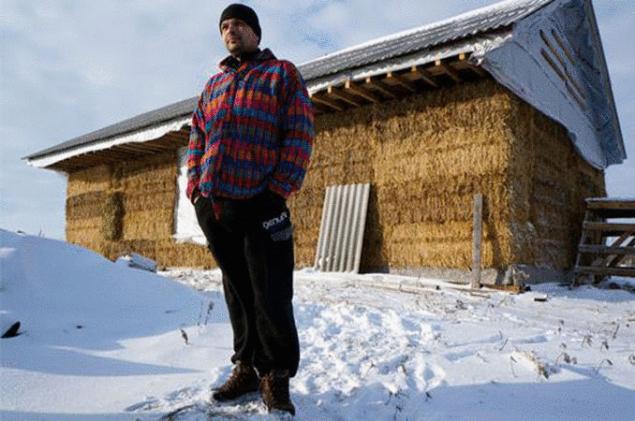
A resident of Voronezh Alexey Kombarov with a friend built a straw house just a couple of months: blocks of dried straw 300 kg each men piled into the wall and carefully plastered with clay. It turned out cheap, fast and environmentally friendly. The technology is not new and was popular, particularly among American settlers in Nebraska in the late nineteenth century. However, in Voronezh, the idea became a sensation: the builders already had followers and customers may soon be built a whole straw village. The cost per square meter of straw — about 50 000 rubles. the price includes the installation of solar panels and wind turbines for energy storage. Mayo, Ireland
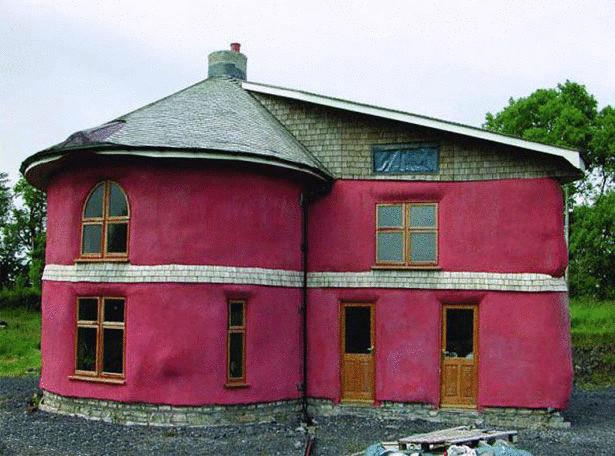
The first two-storey house made of straw appeared in Europe in 2003, it was built by Barbara Jones in Ireland. The construction involved 100 volunteers, and 80 of them women. A form reminiscent of abalone — haliotis. Since then, Barbara has become a guru for the construction of natural homes — she has a lot of orders, seminars and students, only built more than 300 buildings from straw in different cities of Europe.
Wales, UK
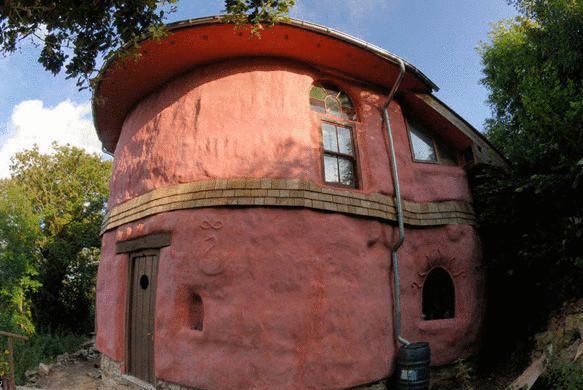
Most eco-homes built in Wales. Especially the famous home of Englishwoman Rachel: he received an award from Grand Designs in 2009. The building was born from a simple shed in which the woman lived a long time without power and facilities for lighting she used candles, cooked on gas stove and carry water from the local well. The idea with the bottles, Windows and more Rachel suggested Barbara Jones. Participated in the construction of only women.
Eco-village in Pembrokeshire, UK
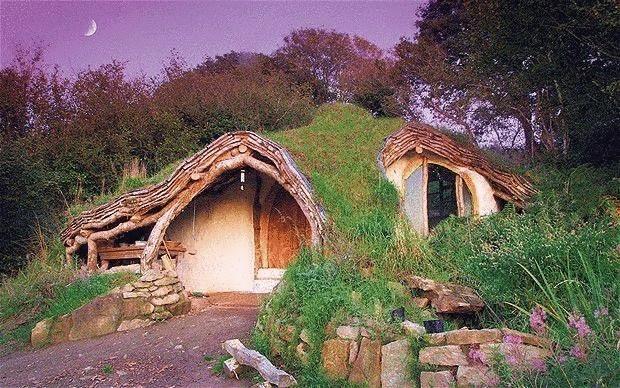
In Pembrokeshire there is a whole eco-village Lammas, consisting of nine families. All the buildings in the settlement, from houses to farm buildings made from natural materials. Amazing forest hut, like the dwellings of hobbits, can be seen firsthand, having arrived in Pembrokeshire in the period from April to September: guided tours to the eco-village is held every Saturday. One of the houses of the settlement Lammas was built a poor young family Charlie the Hague on the plot: the construction lasted a year and cost about £15 000 ($25 000). The hut is completely sustainable: the "living" roof planted with green grass, walls of hay and lime, ceiling and stairs — wood found in a nearby forest. The family moved here from the trailer in connection with the birth of a child.
Round log houses
One of the first eco-homes in Pembrokeshire appeared in 1998, it was built by Tony Frencham and his wife Jane of sawn logs, turf and grasses found in the local national Park. Since then, Tony turned to an experienced Builder — he built more than 20 wooden buildings in different parts of Europe and teaches his simple technology everyone. The house has a circular shape, simple and cheap in construction, and connected to the energy of the sun and wind. The construction process can be viewed on video.
Kob-home
Technology ber is the construction of buildings of a mixture of clay, sand and straw. In the process of building it may seem that the house is built of mud, but the finished result looks very aesthetically pleasing. Kob-house can be seen around the world.
Banat, Romania

Architect Ileana revives forgotten skills in the construction of natural homes.
Somerset, UK

Beautiful house with exquisite ornaments was built for a young couple Lisa and rich on the Creek Bank. The roof is made of cedar shingles.
Oregon, USA

It looks like the construction company's office natural homes, Cob Cottage Company.
Denmark

Builder of natural homes Bern built a tiny house (10 m2) for his son, using local organic materials: in the course went clay, lime and even horse manure. The design is crowned by a thatched roof.
Natural home — budget housing, when there is no money for expensive square meters in the city. In the community of "Natural home" is a record of each new instance and a world map with marked on it ACOPOSmulti.published
P. S. And remember, only by changing their consumption — together we change the world! ©
Source: www.moya-planeta.ru/travel/view/samodelnye_jekodoma_2994/
Voronezh, Russia

A resident of Voronezh Alexey Kombarov with a friend built a straw house just a couple of months: blocks of dried straw 300 kg each men piled into the wall and carefully plastered with clay. It turned out cheap, fast and environmentally friendly. The technology is not new and was popular, particularly among American settlers in Nebraska in the late nineteenth century. However, in Voronezh, the idea became a sensation: the builders already had followers and customers may soon be built a whole straw village. The cost per square meter of straw — about 50 000 rubles. the price includes the installation of solar panels and wind turbines for energy storage. Mayo, Ireland

The first two-storey house made of straw appeared in Europe in 2003, it was built by Barbara Jones in Ireland. The construction involved 100 volunteers, and 80 of them women. A form reminiscent of abalone — haliotis. Since then, Barbara has become a guru for the construction of natural homes — she has a lot of orders, seminars and students, only built more than 300 buildings from straw in different cities of Europe.
Wales, UK

Most eco-homes built in Wales. Especially the famous home of Englishwoman Rachel: he received an award from Grand Designs in 2009. The building was born from a simple shed in which the woman lived a long time without power and facilities for lighting she used candles, cooked on gas stove and carry water from the local well. The idea with the bottles, Windows and more Rachel suggested Barbara Jones. Participated in the construction of only women.
Eco-village in Pembrokeshire, UK

In Pembrokeshire there is a whole eco-village Lammas, consisting of nine families. All the buildings in the settlement, from houses to farm buildings made from natural materials. Amazing forest hut, like the dwellings of hobbits, can be seen firsthand, having arrived in Pembrokeshire in the period from April to September: guided tours to the eco-village is held every Saturday. One of the houses of the settlement Lammas was built a poor young family Charlie the Hague on the plot: the construction lasted a year and cost about £15 000 ($25 000). The hut is completely sustainable: the "living" roof planted with green grass, walls of hay and lime, ceiling and stairs — wood found in a nearby forest. The family moved here from the trailer in connection with the birth of a child.
Round log houses
One of the first eco-homes in Pembrokeshire appeared in 1998, it was built by Tony Frencham and his wife Jane of sawn logs, turf and grasses found in the local national Park. Since then, Tony turned to an experienced Builder — he built more than 20 wooden buildings in different parts of Europe and teaches his simple technology everyone. The house has a circular shape, simple and cheap in construction, and connected to the energy of the sun and wind. The construction process can be viewed on video.
Kob-home
Technology ber is the construction of buildings of a mixture of clay, sand and straw. In the process of building it may seem that the house is built of mud, but the finished result looks very aesthetically pleasing. Kob-house can be seen around the world.
Banat, Romania

Architect Ileana revives forgotten skills in the construction of natural homes.
Somerset, UK

Beautiful house with exquisite ornaments was built for a young couple Lisa and rich on the Creek Bank. The roof is made of cedar shingles.
Oregon, USA

It looks like the construction company's office natural homes, Cob Cottage Company.
Denmark

Builder of natural homes Bern built a tiny house (10 m2) for his son, using local organic materials: in the course went clay, lime and even horse manure. The design is crowned by a thatched roof.
Natural home — budget housing, when there is no money for expensive square meters in the city. In the community of "Natural home" is a record of each new instance and a world map with marked on it ACOPOSmulti.published
P. S. And remember, only by changing their consumption — together we change the world! ©
Source: www.moya-planeta.ru/travel/view/samodelnye_jekodoma_2994/
